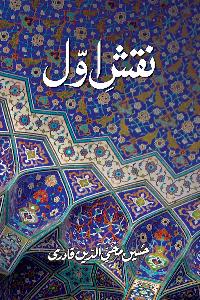Preface
Due to their lofty morals, spiritual orientation, compliance with the Qur'an and the Prophet’s a conduct, Sufi saints were guiding lights, symbols of hope, inspiration and guidance for the people of their age. All flocked to them. When the mystics met their Maker and were buried, people did not break off their relation with them. Devotees visited their tombs when the saints’ invisible existence commenced.
Generally speaking, it is thought that the tombs of saints only quench the thirst of the seekers after the truth and inward enlightenment, and that they have nothing to do with social development and business activity. The reality is the other way around. The present research work aims to highlight this oft-neglected aspect of the lives of Muslim mystics. In their lifetimes, they tried their best to work for the betterment of their societies in religious, spiritual, political, social and financial spheres. Following their deaths, their tombs turned into great spiritual NGOs and served as centres of social welfare. The needy and the poor are fed, educated and treated there free of charge. The income of Sufi shrines is used to establish educational institutes, hospitals, orphanages, inns and hotels where food is served for free. It is worth mentioning here that a systematic research on the contribution of shrines to the fabric of society has not been carried out before. The present thesis highlights the significance of the Islamic concept of serving one’s fellow beings altruistically. The study is restricted to five tombs located in Punjab. A questionnaire was distributed to the target audience and a mixed paradigm of qualitative and quantitative methods was used to analyse the results. The research zeroed in on the positive aspects of the shrines, but it also pointed out some shortcomings regarding their management, so that the officials might address them.
In Pakistan, the performance of NGOs is lauded, but the contribution of shrines to social development is not taken into consideration. Some people are opposed to the very ideology of saints, their hospices and shrines, and their antagonism borders on promoting sectarianism in society.[1] To distance devotees from shrines, opponents propagate that they are not compatible with the presentday progress, and that a mention of the social services rendered by them is meant to popularise them among the masses. However, the antagonists of Sufism are unable to offer any coherent proof of their assumptions. This research helps us to come to know the contributions of Sufi shrines to socio-economic development in Pakistan. The facts and figures given in the third chapter of the book demonstrate how shrines aid the deprived and the needy. While conducting the present research, we learned that donors’ spiritual affiliation with the saints drives them to part with their money for charitable gifts.
[1] Clarke, G., & Jennings, M., Development, civil society and faithbased organizations: bridging the sacred and the secular. International Political Economy Series, 2008; Flanigan, S. T., For the Love of God: NGOs and religious identity in a violent world, Sterling, VA: Kumarian Press, 2010, p. 5.
Copyrights © 2025 Minhaj-ul-Quran International. All rights reserved



